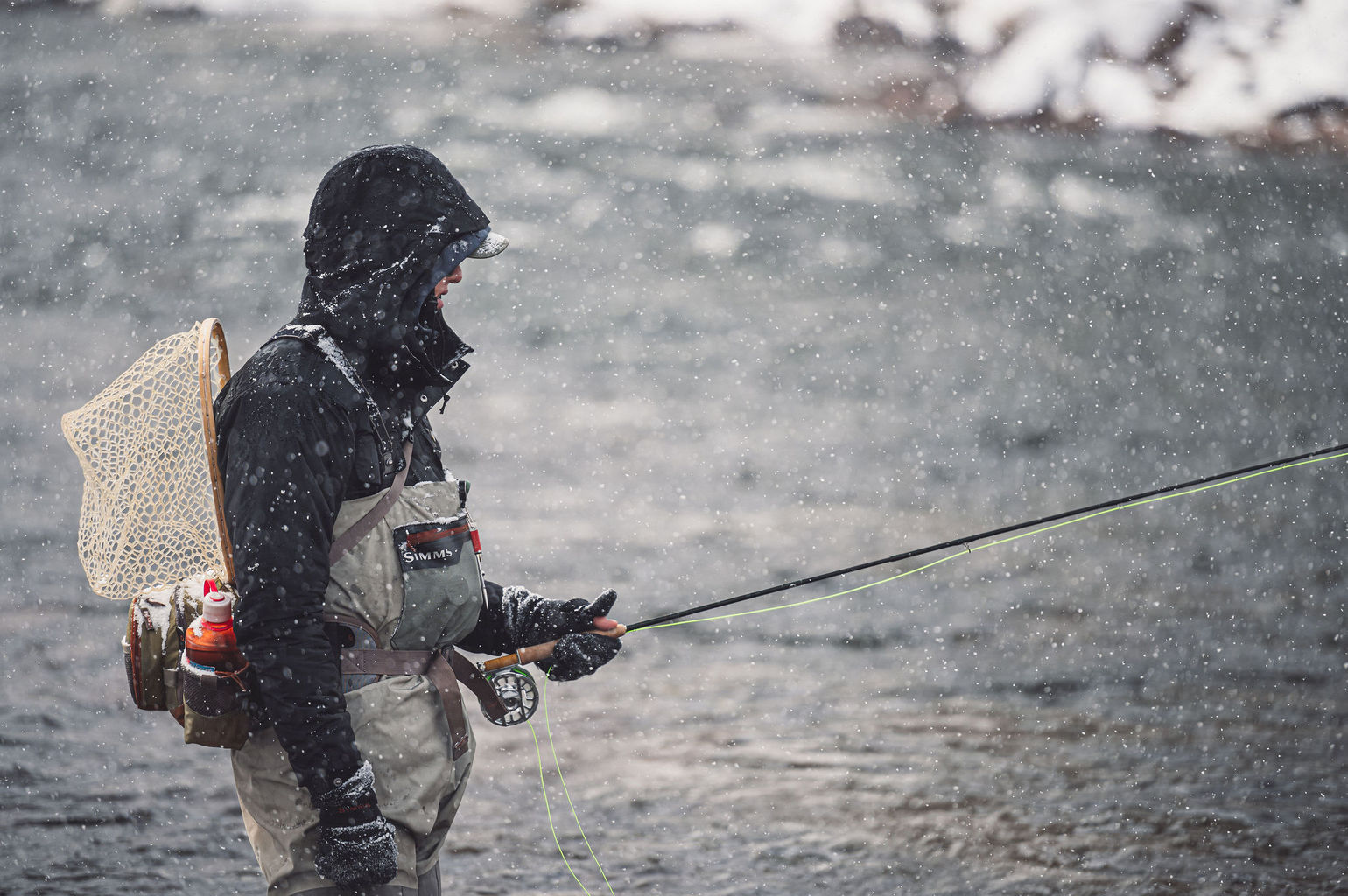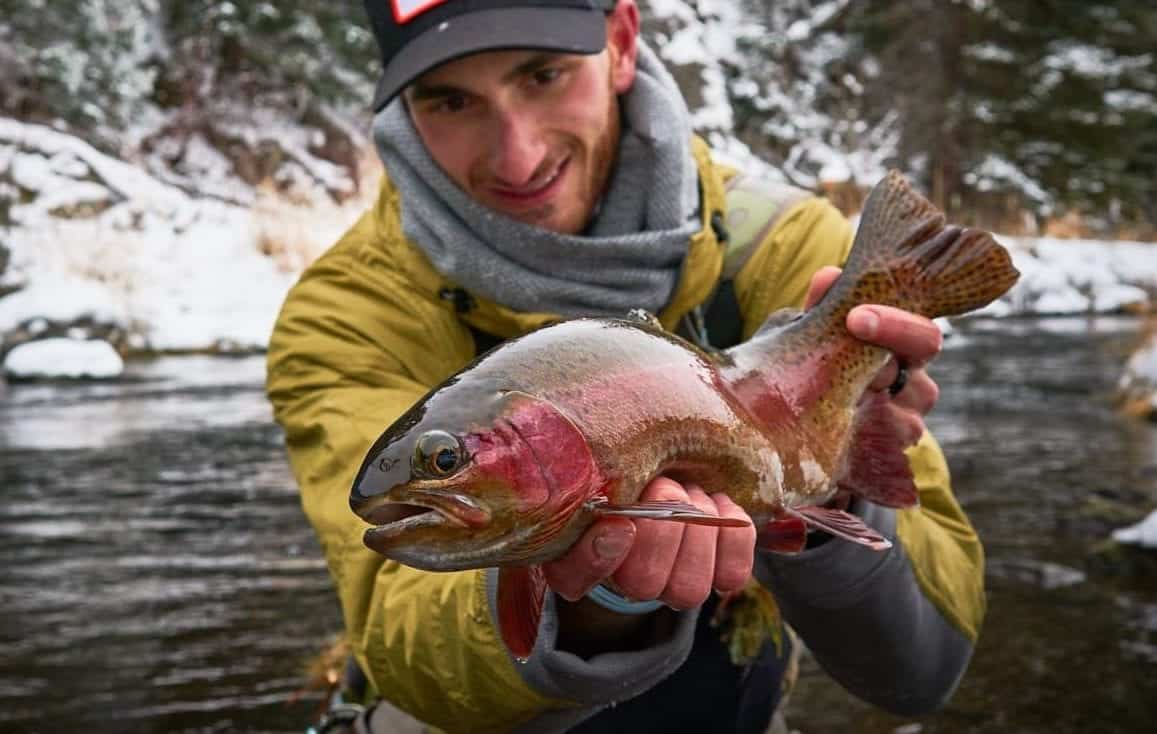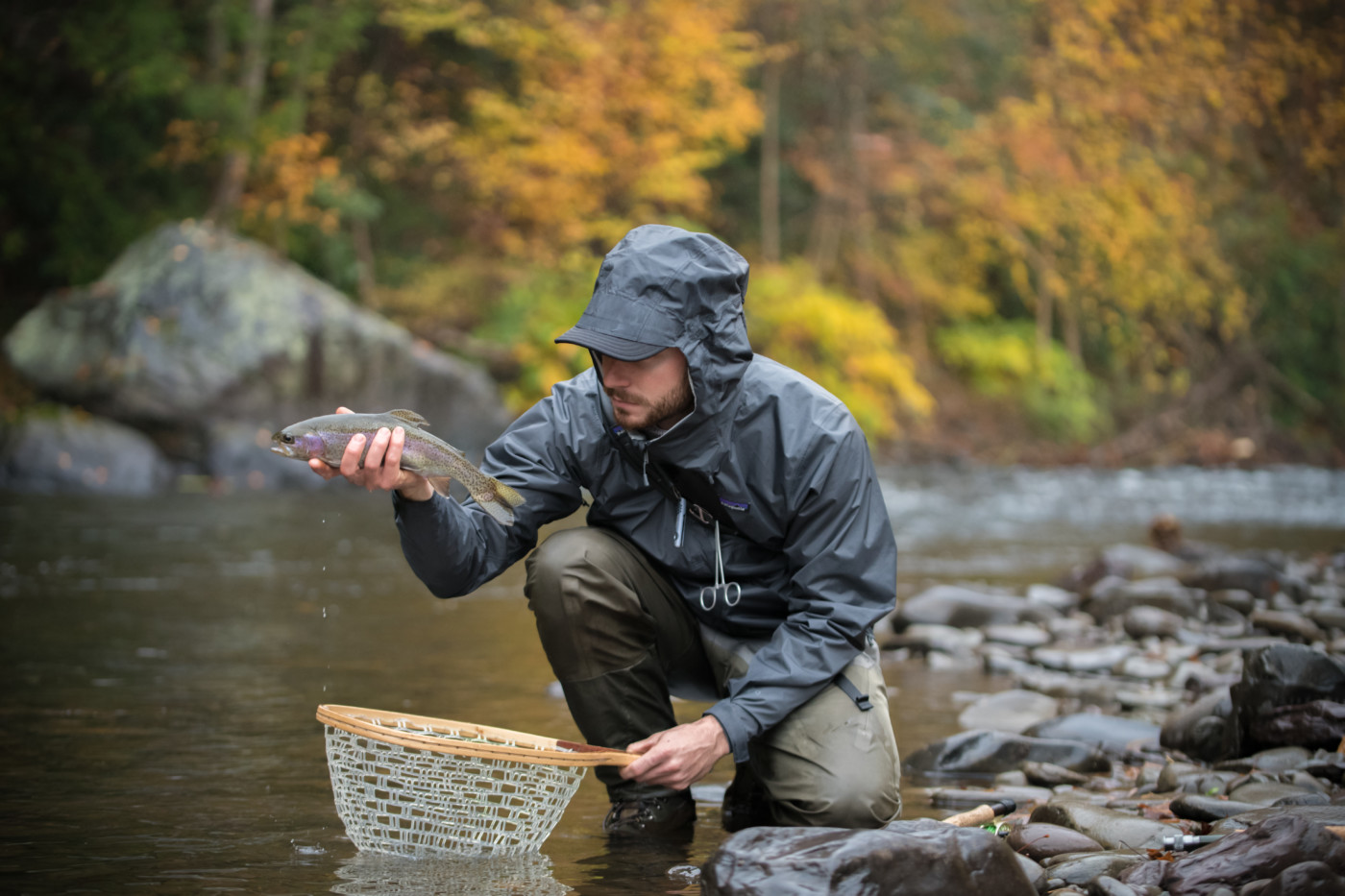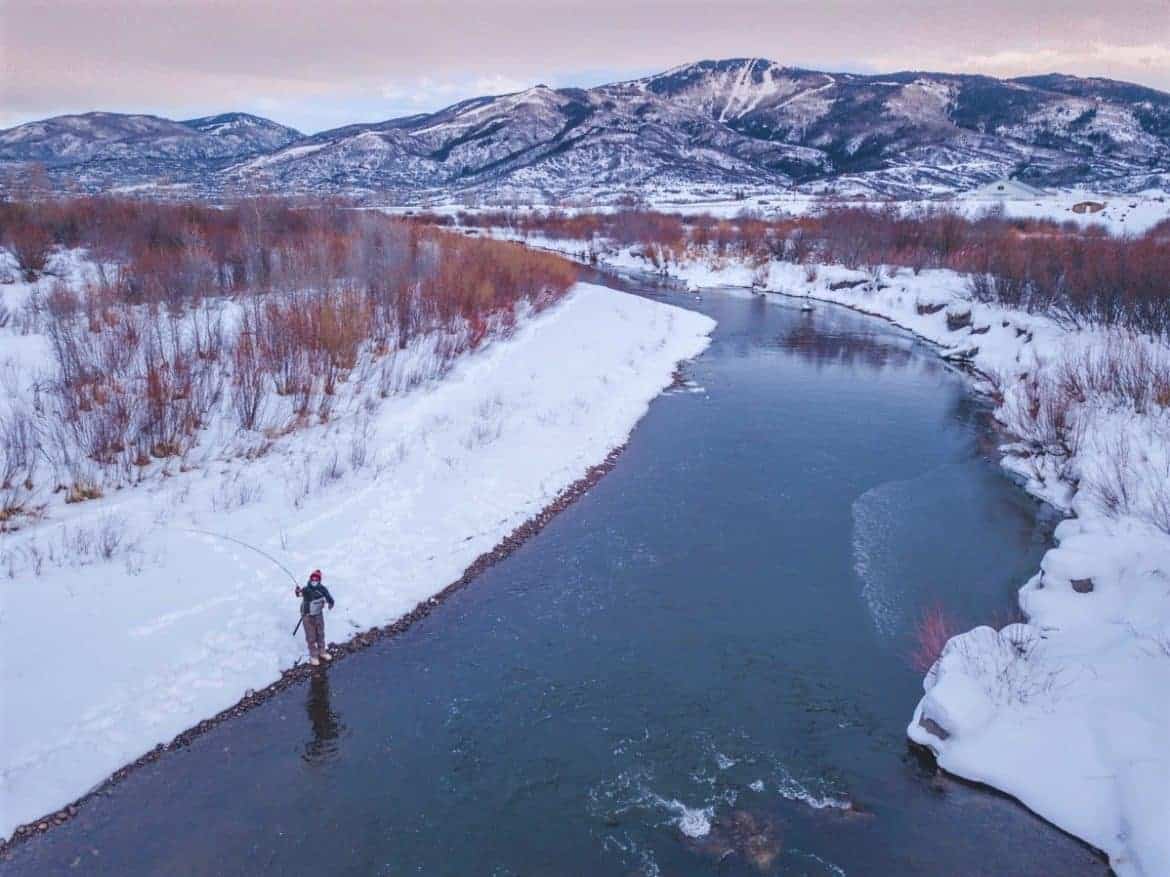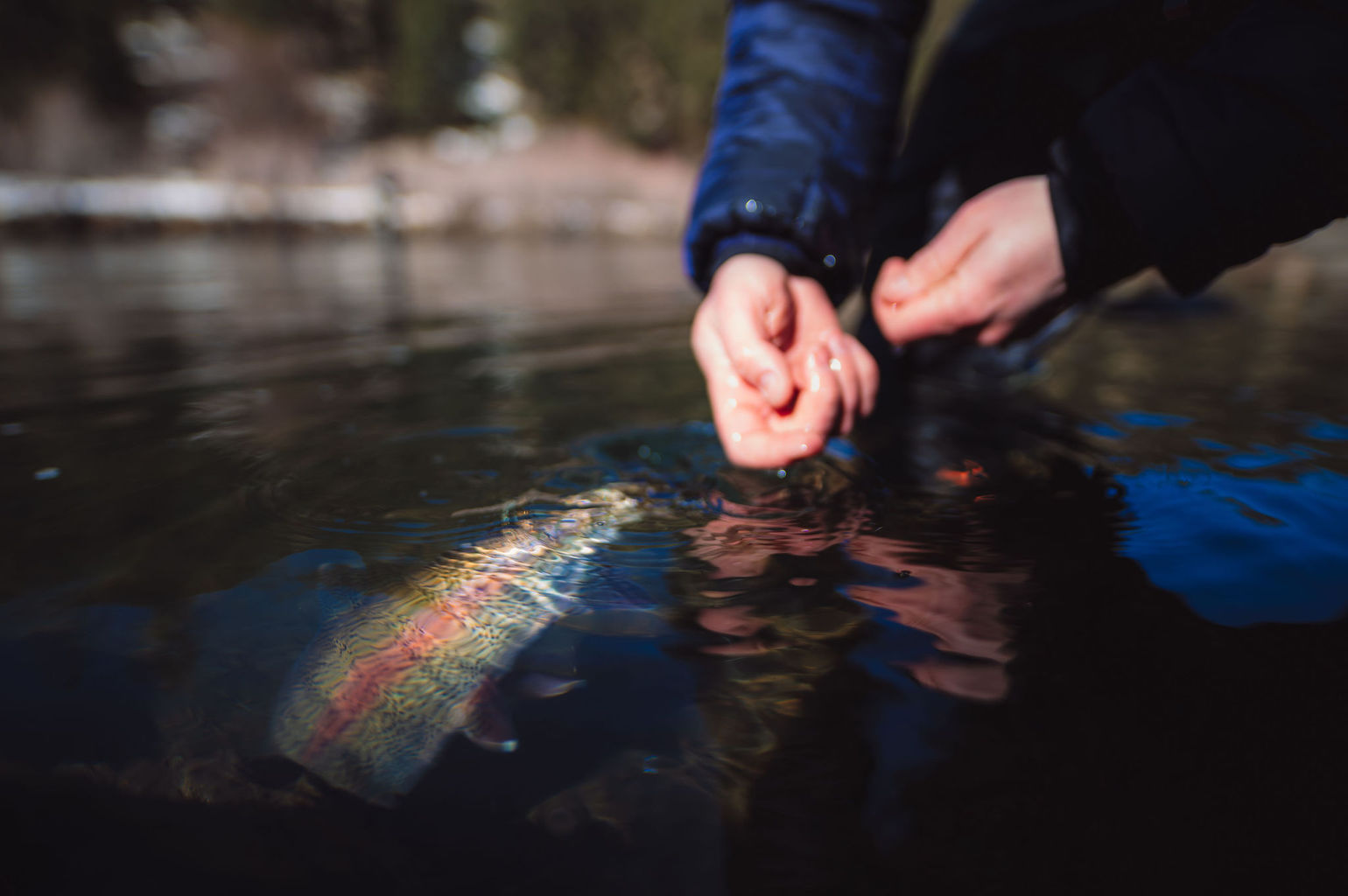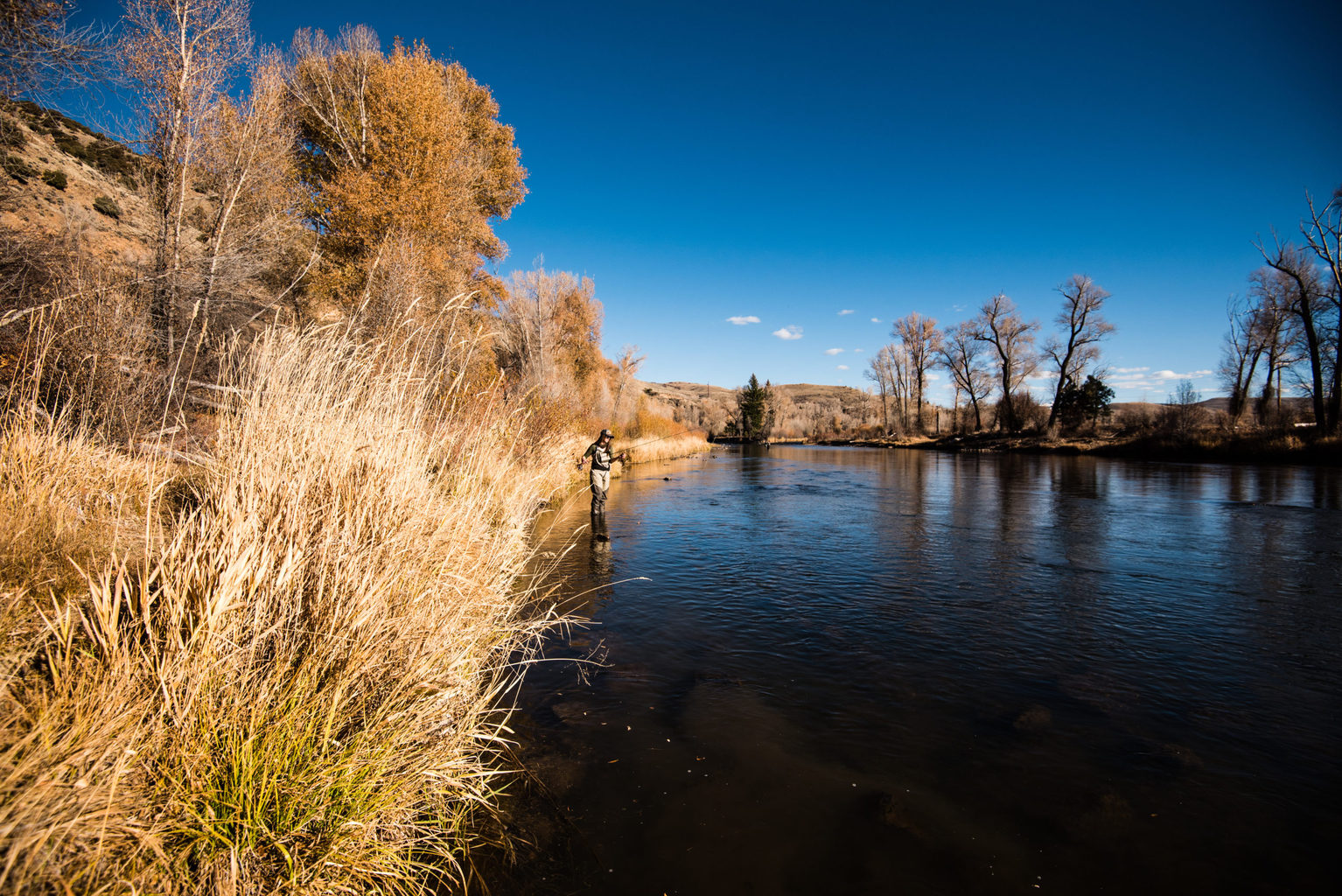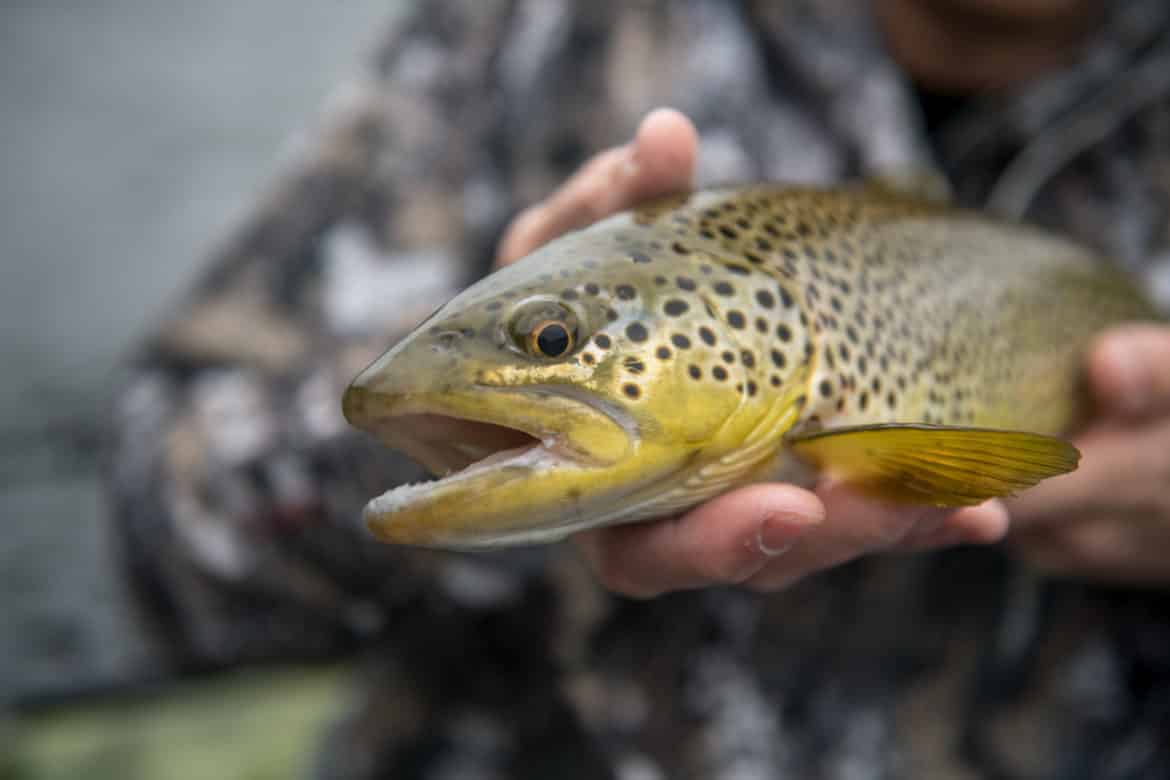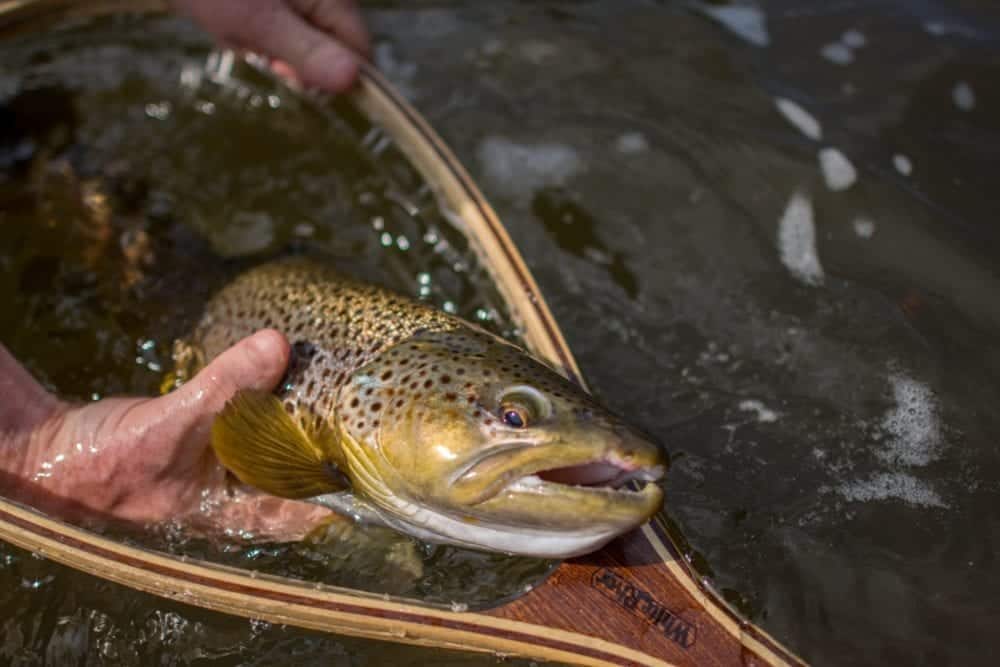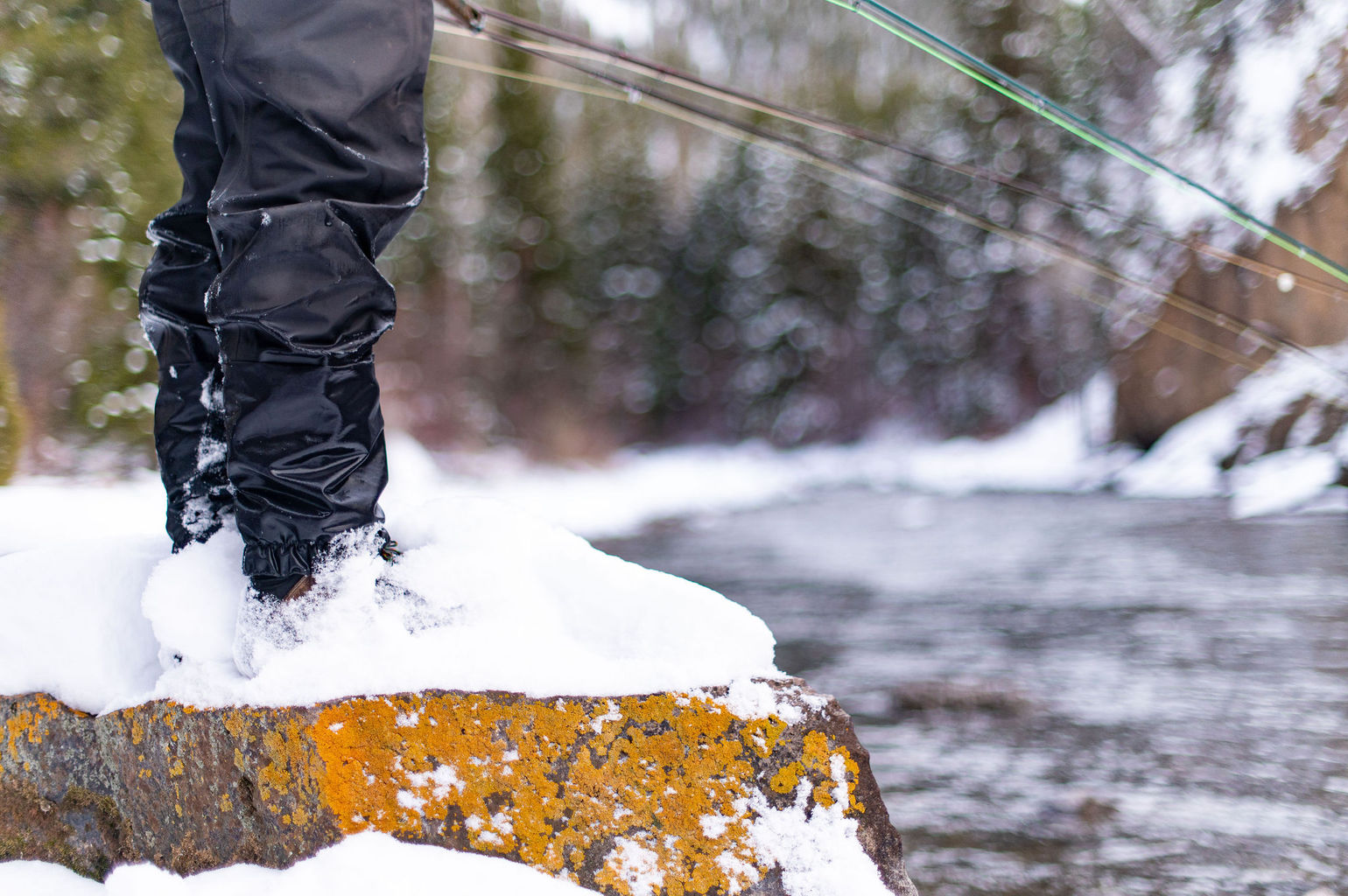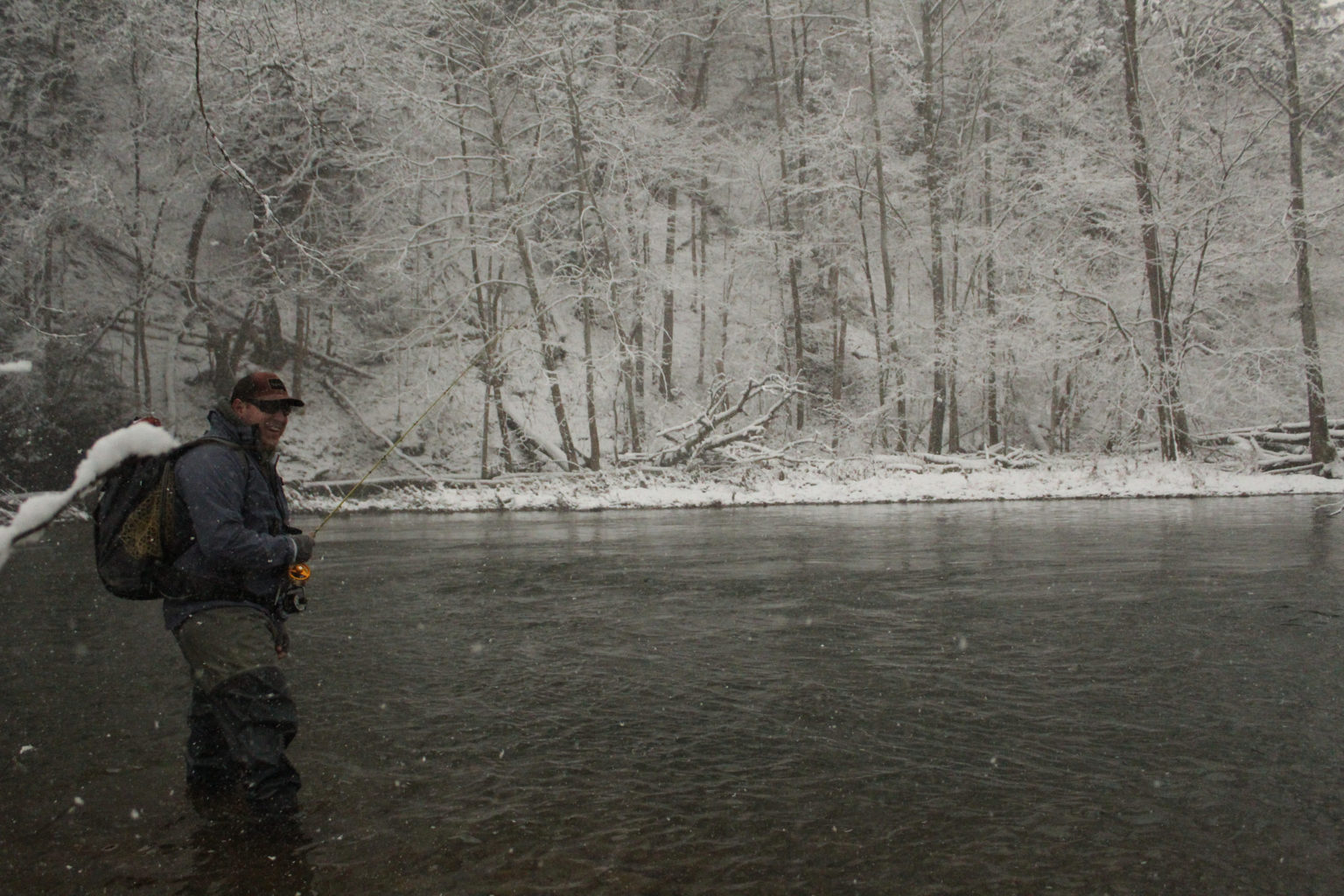Fly Fishing Tips For November
November is a month of transition. Dependent upon your geographic region, November is either the comfortable end to fall or the chilling embrace of winter. Often, it’s a bit of both. Understanding fish behavior during transition periods is paramount to success.
Fall, which is now nearing its close, can be a challenging season to target trout. That isn’t to say you can’t have banner days, because you most certainly can. But low, crystal clear streams make for spooky trout.
However, colder water carries more oxygen, so finding pods of fish is definitely in the cards. With more favorable oxygen levels, a trout’s main concern shifts from finding comfort to foraging and avoiding predators.
Look for fish to hold in logjams, undercut banks, deep pools and under rocks. They’ll venture out to feed if they feel secure, so periods of low light provide ample fishing opportunities.

Fall is generalized as a period with little bug activity and less active fish. The cooling water temps boost oxygen, but also slow caloric needs and metabolism – nature has a way of lining things up perfectly.
The reliability of spring and summer hatches is long gone for the year. Sunny days may bring a few small trico, baetis, or caddis hatches, but far past October these are fleeting and don’t generate a lot of feeding activity.
Nymphs regain their popularity amongst anglers, but this time of year they are beginning their year-long growth cycle and are much smaller than they were just a few months back. Size down for success and have some thin diameter tippet at the ready.
Use Nymphs and Streamers
To make up for the lack of aquatic insects to feed on, trout will turn to higher protein meals like baitfish and their own fry. So grab your favorite streamers and start hunting. You can even try dead-drifting a tandem rig with a streamer and small nymph trailing about a foot or so behind (this setup at times is a pain to cast and manage, but can be deadly).
- Size #14 nymphs and smaller are most effective.
- Use multiple flies on a single rig, depending on your local regulations.
Where to Look for Trout
As the last leaves fall from deciduous trees, winter takes hold. Water cooling continues and trout respond with slowing metabolisms. They shift their attention to finding warmer water that provides cover from predators.
Most of the trout will gather in one to two sections.
Look for fallen logs, branches, large boulders, and rocks followed by a pool at least 3 feet deep. Trout will use the nearby structure and depth of the water to hide from predators. Plus, the flow will be disrupted allowing the trout to spend less energy swimming while continuing to feed.
- Tree logs
- Branches
- Boulders
- Rocks

Favored holding lies are typically deep pools, holes, and runs fueled by streambed springs. Pods of fish become even more prevalent.
How to Catch Trout
Trout tend to feed less aggressively, so you really need to start “feeding the fish,” by putting your flies right in front of their nose. Trout, like most fish, are opportunistic feeders, so if you can put a fly in front of them and reduce the distance they have to move, and the amount of energy they have to exert to get to it, you’ll find success.
Target the areas they are most likely to feed. Sure, trout tend to gather in one pool, but they still spread themselves out based on their feeding behavior. There will be trout that are resting and trout that are feeding.
Knowing where to find the ones that are feeding is the key.
- Heads of the pools
- Off to the sides
- Below the seamlines
- Trailing downstream of the pool
- In the riffles
Sunny days that feel more like fall than winter can still produce small midge hatches. Younger, smaller fish will rise to the surface, but older, larger fish typically hold to their depths in the water column. A tandem nymph rig, one large weighted up top, and a smaller nymph trailing provides a good winter setup.
Because fish are more reluctant to move this time of year you’ll need to cover water more thoroughly. Pick pools apart, and work your way through the water slowly. One or two casts to a spot may not be enough, so don’t get discouraged or anxious to move to new water too quickly.
Fly Fishing Made Easy 👍
Our Quarterly Fly Club ships 1,000’s of flies to anglers all across the United States. Receive curated fly assortments selected for the season with in-depth articles on how to fish them. Great for beginners to learn and for intermediates to discover new flies.



